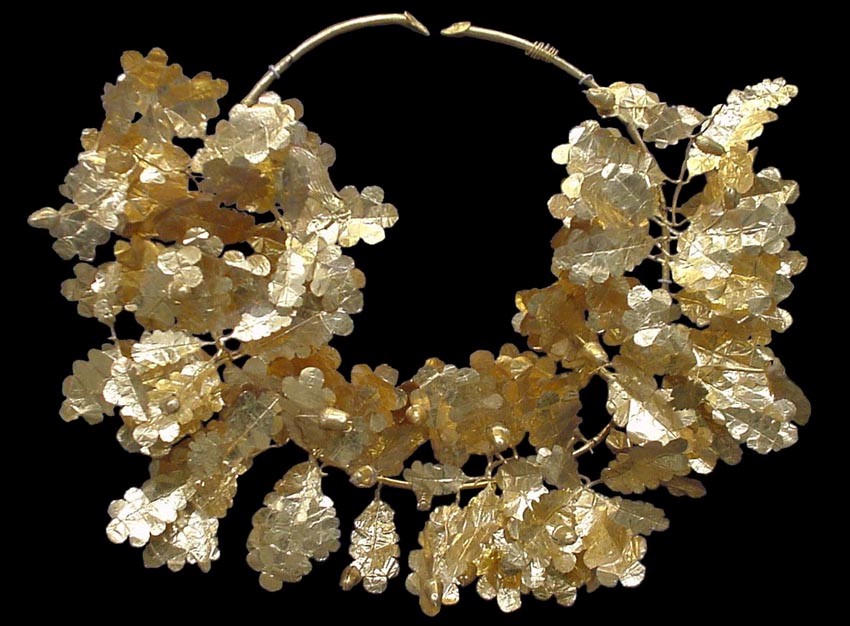29.12. 2016
BADNIK (CHRISTMAS EVE) – “IT COMES SO AS TO BE”
Judeo-Christianity is semi-distorted truth, well-tuned for misleading
the common masses, in a word – it is brainwashing.” - Excerpt from “ANANTS AND
ANTLANTIS – ATLANTIS”.
Ever since the stone historical period, at least
500,000 years ago, the Macedonians and the
Macedonian calendar considered the end of the old year to be from XXII December
to XXV December, when the new year in fruit begins. In some regions on this planet,
the new year of the Macedonians began from XXI March.
In
nature there is a phenomenon called “three-day sunstanding”. What is it about?
Mother Planet Macedonia – Mother of God gives birth to IS – the baby God, the GROWING of the day. How does that happen? It must be said immediately that Mother Planet Macedonia – Mother of God with her
circular movement around her axis, each morning gives birth to the day or Sun
God Ilija (Elijah), and among other things, she is therefore called Mother of
God.
In terms of the seasons, Mother Planet Macedonia –
Mother of God with her axis of movement tilts towards both one and the other
side, thus giving birth to the four annual periods.
On XXV December Mother Planet Macedonia – Mother of God, after three days of
hesitating, decides to tilt her axis from the AZHDER (DRAGON) constellation
towards the KRST (CROSS) constellation. On the cross read more in the book Zeta Macedonia, p. 42.
Mother Planet Macedonia – Mother of God tilting
toward the Cross constellation Cross marks the moment when the day actually
begins to increase and night begins to decrease. Macedonians call this
deviation of the axis: krst, kresht, vosrese, prekrshtvanje, blom, lom, lon on
don. That is the beginning of increasing the day, ia called: R’S, R’STOT
(increasing) of the day, R’STOS, HRISTOS, in Christianity is called Jesus. Since
the day is increasing, the now stronger sunrays are called KRSHT. The
personification of the sun ray “KRSHT”, “KREST” (krijesovi) is fire.
The day before Christmas, or December 24 – Badnik (Christmas Eve), fire
is lit. During the day oak tree is cut, today called BADNIK-DABNIK. According
to Macedonian customs the Dabnik-Badnik was cut by the o0ldest member of the
family (which personifies the old sun TESHT (father-in-law) or KRESHT),
accompanied by the youngest member of the family (which personifies the young
sun called ZET (son-in-law)).
The
sacred tree Dabnik-Badnik represents a medium for connecting the lower and the
upper world, linking death to rebirth – resurrection. The oak tree is a symbol of strength, durability and eternity.
The
quality of any burning wood is to release heat and light, and besides these
qualities there is another occurrence, which is throwing sparks upon touch. A burning oak tree when
rolled releases a large amount of sparks. These sparks are a key factor in the
ritual ceremony of the resurrection.
The sparks are otherwise called KRESHT, KREST, and with the Macedonians
on the territory of Croatia are called KRIJESOVI.
The noun
BADNIK (Christmas Eve) means IT COMES SO AS TO BE. What does that
signify?
The tradition of the Macedonian faith (literacy
and culture) is 500,000 years old. In the stone period of the Macedonian
people, graves can be rarely found. Due to this fact, “scientists” today think
that at that time there were no people or they were in small numbers. The
problem lies in the Dabnik-Badnik. Actually, the deceased Macedonians were not
buried, but they were lit on a pyre. Thus, the body and the soul are purified,
and the spirit Macedon climbs the
flames and sails towards the sun by way of KRESKANJE or throwing sparks from
the burning oak tree (now called fireworks). This pyre onto which the deceased
is burning, and thus climbs UP to the sun, is called PAGOON (meaning “up on a
fire”. This is the origin of the later vulgarised term PAGAN). The next day
the spirit Macedon will rise again with the new day, the new life.
The word BADNIK is a word with two faces. The
word BAD represents the old year, and after XXV December it will be DAB or new
year in fruit. BAD is a harbinger of death, while DAB is the birth of a new
life. This is part of the Macedonian faith of
the truth,
faith in the resurrection or reincarnation. Due to the high respect for the oak
tree and its sparks, as a symbol of resurrection,, the Macedonians made golden crowns of oak leaves.
.............

This tradition was interrupted by the arrival of the Romans in Macedonia
and the introduction of Christianity.
Later, the Christian church took over this celebration and symbolically
connected it to the Nativity. It created the Christmas Eve oak twig tradition.
What are the Christmas Eve oak twigs? The Christmas Eve oak twig is a
sacred tree among the Macedonians, its name being oak.
In Christianity this tree was declared forbidden tree. The one tasting
the oak fruit, was to be banished from Paradise by the “Roman God”, in fact his
life would be hell, as a Roman galley slave.
Christian
fathers with could not eradicate this custom, and just like other practices it
accepted it, now as oak leaves used for warming the newborn Jesus.
The
Macedonian monotheistic Orthodox faith is the faith of reincarnation of day,
sun, spring flowers and beauty. On holidays Macedonians adorned themselves with flowers. On December XXV the reincarnated young
sun, called ZET is born. The personification of the young sun is the selected,
young Macedonian Zet. On XXV December he was adorned with a crown of yellow oak
leaves, a symbol of the sun. The new only ZET had the power to transmit the
word of God. Throughout Macedonian history he was called Enoch, Zet, Hermes,
Asclepius, Alexander, Jesus.
The Dabnik-Badnik as a divine crown, as a sun ray, as a sun, is kept in
every home for the entire year. It brings happiness, peace and has healing
power.
In order to destroy the root of the Macedonian royal crown, Christianity
propagates to lit next morning’s fire with the Christmas Eve oak twig.
Actually, the Christmas Eve fire is to be lit with last year’s
Dabnik-Badnik.
Last year’s
ZET, the then young sun at the end of the year, during the longest night will
become TESHT or KREST. Now the crown of the Tesht is put on fire. This custom
has been documented with an inscription from Osinchani near Skopje.
.....................
Ilina Gora, Upper sanctuary, Osinchani, near Skopje, Macedonia,
7,000 – 6,000 years Maced. era before Christianity.
The Macedonian BLOSSOM
alphabet and the Macedonian language of the SUN were used to write: “KRESHT SE
SI U L’T S’L S ILJU” meaning “RESURRECT IN FLIGHT ONLY WITH THE SUN”. Ilina Gora,
Upper sanctuary, Osinchani, near Skopje, Republic of Macedonia.
The inscription is a
cultural monument of Macedonian people and is a testimony of the ceremonial
funeral rites, of the journey of body and soul to the Sun. Using fire as a
symbol of the Sun and flames as a symbol of sunrays, souls sail towards the Sun
for purification, and through the rays with the help of divine lightning, are
transmitted in the centre of the spiral, where they multiply – resurrect,
called “KRESHT” in heaven as divine spirit Macedon. The divine spirit Macedon, entered the VSELENA
(universe) with the help of divine lightning DZE and the deer, as a symbol of
the sunray, using the “adzil’k” (gaze through the rainbow), arrives in
Macedonia – Paradise as sunray, music with Macedonian
rhythm, space dust, dew,
sprinkle or fertilizer.
The word “KRESHT” means
“RESURRECT”. The Lord – God Macedonian placed on a pyre sails off to the Sun,
but in order to resurrect again. This inscription indicates the ritual of
resurrection, rebirth and reincarnation.” - Excerpt from the book Zeta Macedonia 400,000 years of
literacy,
p. 98.
(The book Zeta Macedonia has been published in a second supplemented edition, as well as in an English language edition, which can be read at the “Brakja Miladinovci” City Library. The book is not sold via retail. It can be bought from the author at zetamakedonija21@gmail.com or phone +389 78 264 106).
There is a great interest in the English translation of the book Zeta Macedonia. It can be found in the libraries in Berlin, London and Washington. The great interest is due to the fear of discovering their false history, regarding their own Macedonian origin.
(The book Zeta Macedonia is printed in a second, supplemented edition and in English translation, which can be read at the City Library “Brakja Miladinovci”. It is not sold via retail. It can be bought from the author at zetamakedonija21@gmail.com or phone +389 78 264 106)
[1] Drawing by Branko Sotirovski, deciphered by Vasil Ijlov. http://www.makedonijaese.com/storia1.htm